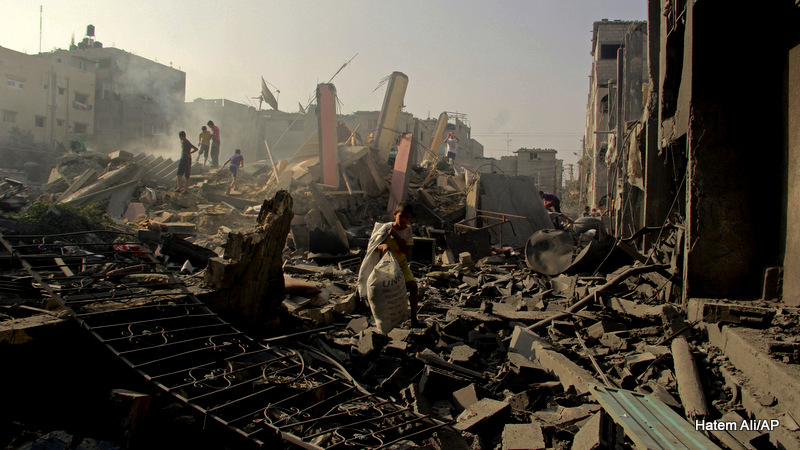
The Pentagon is reportedly in possession of a summary report that details how the Israeli army used up to 7,000 shells to bombard Shuja’iya in Gaza City on July 20, according to analysis run by Al-Jazeera America on Thursday.
The amount of shells and artillery pieces used in Shuja’iya is significant because the bombardment was one of the more notorious events during Operation Protective Edge, having killed 65 Palestinians. During a ground assault in the neighborhood prior to the July 20 bombing, 13 members of the Israeli Defense Forces (IDF) were also killed.
Mark Perry, the author of the analysis and the book “Talking to Terrorists: Why America Must Engage with its Enemies,” explains that when speaking with a “high-ranking U.S. military officer,” information regarding the number of Israeli battalions (11), artillery pieces (258), and “high explosive shells” (7,000) used in Shuja’iya was divulged.
During an interview with MintPress News, Perry said that he was “almost certain” that the report contained the same informationSecretary of State John Kerry reacted to when he famously exclaimed, “It’s a hell of a pinpoint operation!”
Meanwhile, Perry’s report states that Lt. Gen. Robert Gard, a war veteran and chairman of the Center for Arms Control and Non-Proliferation in Washington, exclaimed: “If the figures are even half right, Israel’s response was absolutely disproportionate!”
Perry said that he became interested in what happened in Shuja’iya because he was “interested in military tactics and… fascinated by Israel’s approach to controlling Hamas.” From the start of the war, he said, he believed Israel would emotionally overreact to what he called a “modest threat.”
The most pertinent example of that overreaction, coupled with an inappropriate military reaction, was the battle of Shuja’iya, he explained.
“It was almost as if they hadn’t read Clausewitz,” he said. “They did not look at this military confrontation as having political goals.”
He asserted that Israel initially claimed it wanted to disarm Hamas, then it said it wanted to demilitarize Gaza. After that, it wanted to break up the unity government, then it was going to destroy the tunnels, and finally, its goal was to strengthen and deepen ties with the United States.
All of this confusion, as well as the high civilian casualty rate (up to 2,200 Gazans and 69 Israelis), has led Perry to believe that Israeli Prime Minister Benjamin Netanyahu did not have any clear political goals in mind before embarking on this war. However, Israel did declare a 3-kilometer buffer zone (1.8 miles) around the Gaza Strip, which “eats up about 44 percent of Gaza’s territory.”
Perry said the “we’re going to make them pay” mentality is not a political goal, and it ended up costing the Israelis because Gazans are now more vigilant in their support for Hamas, and Israel has had to concede Hamas’ role in the unity government.
What it did show, he said, was the futility of an emotional war unguided by clear policy goals.
Netanyahu is in trouble because Israel’s right-wing looks at him and sees a person that “cannot protect southern Israel because Hamas can still fire rockets in there, and the left-wing looks at him as a war monger,” he continued.
Following Tuesday’s ceasefire, Israeli Defense Minister Moshe Ya’alon has been quoted as saying: “From the start we set achievable goals and accomplished them.”

